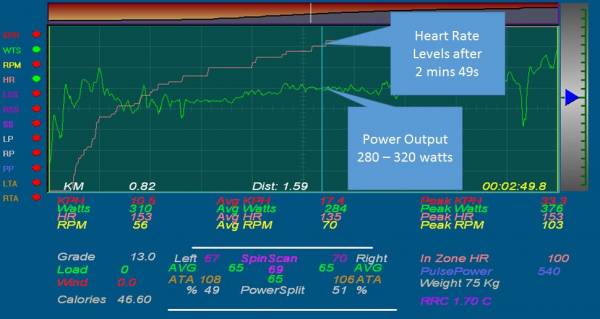There have been a few early season cycling events near me already this year. And although I am still working through my main training program, it has been a good opportunity to bring in some race technique training in advance of my main events to come later in the year.
As the temperature is still quite low in the mornings, I pay particular attention to my warm ups before racing. One reason is simply to stay warm and comfortable before the start of the event, and the other more important reason is to ensure my body is ready for the effort that is about to start.
The Three Aspects to My Warm Up
First, I do all my warm ups on my competition bike that I will be using. This gives me an opportunity to check that everything is working as it should. I work up and down through all the gears and check the brakes, wheel skewers, cleat tension, and helmet fit. Any last minute adjustments are then made. I have then also completed a mental preparation that everything mechanical is working as it should.
Second, I do some simple and gentle mobility exercises starting from the top of the body and taking it gently through all the ranges of movement in all directions. I find this eases any stiffness from an early morning start and long car journeys. This starts to prepare the body for movement.
Third, I put my cycle on a turbo trainer and start my main warm up. I used to find a quiet road near the start of the race and cycle around this. However, I found I was able to obtain a better quality and controlled warm up on a turbo trainer without the worry of traffic or punctures.
My Turbo Trainer Warm Up
My suggested turbo routine is to take a good five minutes to ease up to 50% of your FTP or around 110-120 beats per minute heart rate. (FTP stands for functional threshold power.) Keep a jacket on and any leggings to stay warm if the weather is cold. This elevates the heart rate, warms the body, and starts the blood body fluids shunting to the main muscles in the legs and glutes. While this gentle activity is taking place, it can be an opportunity to rehearse mentally any race plans of the race route.
Over the next five minutes, ease up to 80% of your FTP or around 85% of your maximum heart rate. You may wish to remove your jacket and leggings here if it is warm enough. This raises the body temperature more and raises the heart rate towards that expected during your event. Also, raise your cadence to your normal race pace at this point. I find this helps to exercise and prepare the neurological system to fire all the muscles at the expected rate.
Finally, include a couple of sprints lasting about twenty seconds and taking the cadence to about 120rpm, if you are able. This provides a further stimulus to the neurological system before bringing the speed back down again and making your way to line five to ten minutes before the start.
The Performance Benefits of a Good Warm Up
One of the reasons I feel it is important to arrive at the start in a warm state can be seen on in the picture. This shows my heart rate rising as I tackle a start at between 280-320 watts. This could be the start of an event. The pink line is my rising heart rate and it took two to three minutes to rise and stabilize to achieve a working heart rate.

During this first two to three minutes, my heart rate is insufficient to deliver enough oxygen and nutrients to the working muscles. In order to perform, I am working anaerobically, using up muscle glycogen and starting to buffer lactic acid as a by-product. As long as I don’t start off too quickly, my cardio vascular system will catch up after these initial minutes and deliver oxygen and also metabolize the lactic acid.
But starting after a thorough warm up will enable your body to arrive at its working heart rate quicker than starting from cold. Starting from cold will mean your body has to work anaerobically for longer, with the risk that it will be unable to metabolize the lactic acid fast enough and you will have to slow down until your heart rate has caught up.
Ideally, you will arrive at your race start warm with a raised heart rate, so as soon as you are off, the cardiovascular system is ready and primed to deliver the oxygen and nutrients. Your heart rate will be raised, fluid will be lubricating joints, and muscles will be warm.
However, arriving at the start in a warmed-up state is not always possible, with the time between finding your place on the line and the start including a wait of up to ten minutes. In this case it is better to ease into the event over the first couple of minutes. This enables the cardio vascular system to come back up to speed and will avoid excess lactate buffering.
Good luck with your events this year and remember to warm up well! If you have a warm-up routine that you love, please share in the comments below.
Photo 1 courtesy of Shutterstock.






